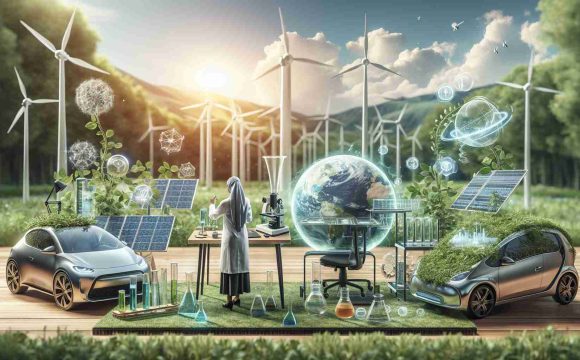The Future of Energy in America
As of late 2024, renewable energy sources are making significant strides in the U.S. electricity sector, now accounting for more than 30% of utility-scale generating capacity. Reports suggest that this figure could reach as high as 37% by 2027. Within the first ten months of this year, nearly 25% of electrical generation came from renewables including solar and wind.
October marked an impressive milestone, with solar capacity leading the charge as the primary source of new energy installations for the 14th consecutive month. This trend points to solar potentially securing its position as the second-largest source of U.S. electricity generation after natural gas within just a few years.
FERC’s recent data highlights a staggering 90% of new generating capacity came from renewable sources in 2024. Specifically, solar installations surged by 80.5% compared to last year, while natural gas growth lagged behind significantly.
The combined capabilities of solar and wind now represent over 21% of the nation’s total electrical generation capacity. With projections indicating that solar could make up 15.5% of this capacity by 2027, it is evident that the landscape of energy generation in the U.S. is rapidly evolving, favoring renewable sources on a grand scale.
As the renewable wave continues, the energy sector readies itself for a future where clean energy takes center stage.
Unlocking America’s Energy Revolution: The Rise of Renewables
The Future of Energy in America
As we approach the end of 2024, the United States is witnessing a remarkable transformation in its energy landscape, characterized by a significant shift towards renewable energy sources. Recent developments show that renewables now account for over 30% of utility-scale generating capacity, a figure expected to climb to 37% by 2027. This transformative phase marks a long-term departure from traditional fossil fuels to sustainable energy alternatives.
The first ten months of 2024 have been pivotal, with nearly 25% of electrical generation stemming from renewables, primarily solar and wind energy. October delivered a notable achievement as solar capacity dominated new energy installations for the 14th consecutive month, positioning it on the verge of becoming the second-largest source of electricity generation in the U.S., trailing only natural gas.
A Surge in Solar Energy
The Federal Energy Regulatory Commission (FERC) recently reported a staggering 90% of new generating capacity in 2024 derived from renewable sources. Leading this charge, solar installations experienced an 80.5% increase compared to the previous year. Meanwhile, the pace of new natural gas installations has substantially slowed, highlighting a significant shift in growth dynamics within the energy sector.
Currently, the combined capabilities of solar and wind energy account for over 21% of the nation’s total electrical generation capacity. Projections indicate that solar energy alone could contribute 15.5% to this mix by 2027, underlining its importance in the nation’s transition to a cleaner energy future.
Pros and Cons of Renewable Energy Transition
Pros:
– Environmental Benefits: Reduces carbon emissions and reliance on fossil fuels.
– Job Creation: Increasing renewable sector jobs, including installation and maintenance of solar panels and wind turbines.
– Energy Independence: Renewable resources can enhance national security by reducing dependence on foreign oil.
Cons:
– Intermittency Issues: Solar and wind energy production can be variable and less predictable than fossil fuels.
– Infrastructure Needs: Upgrading existing energy infrastructure to accommodate increased renewables can be costly and time-intensive.
– Resource Availability: Some regions may have limited resources for solar and wind energy generation.
Market Insights and Future Predictions
As the adoption of renewable energy accelerates, we can expect several trends to shape future developments:
– Increased Technological Innovation: Advancements in energy storage and grid management technologies will boost the efficiency and reliability of renewable energy.
– Policy Support: Federal and state incentives will likely continue to drive the growth of renewable energy projects, with initiatives aimed at achieving carbon neutrality by 2050 gaining traction.
– Consumer Demand: A growing consumer preference for green energy solutions will further propel the market for renewables.
Conclusion
The clean energy movement in the U.S. is not just a passing trend; it represents a fundamental shift in how America generates and consumes energy. As the sector prepares for an increasingly renewable future, advancements in technology and policy will play critical roles in overcoming challenges and maximizing the benefits of sustainable energy sources.
For more insights into the energy sector, visit Energy.gov.






